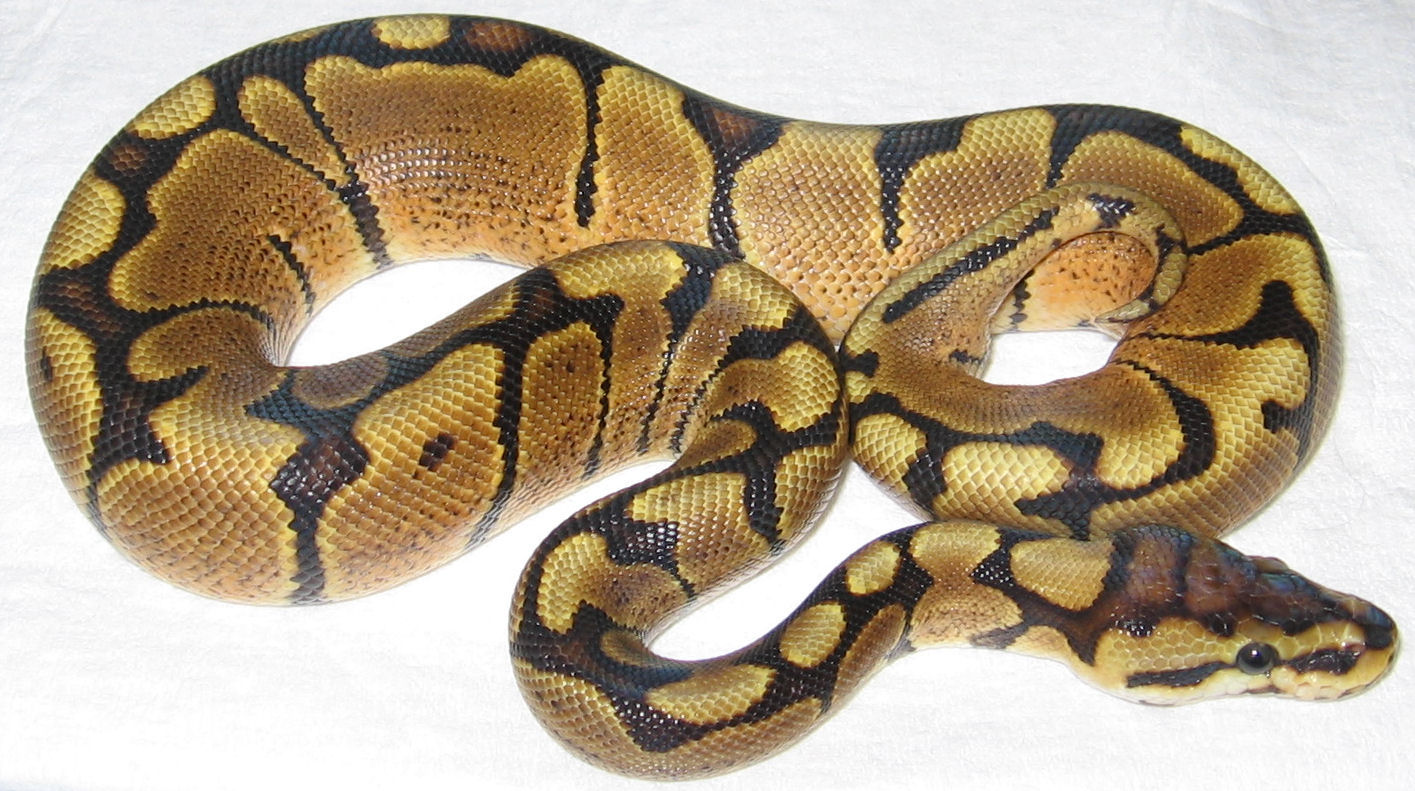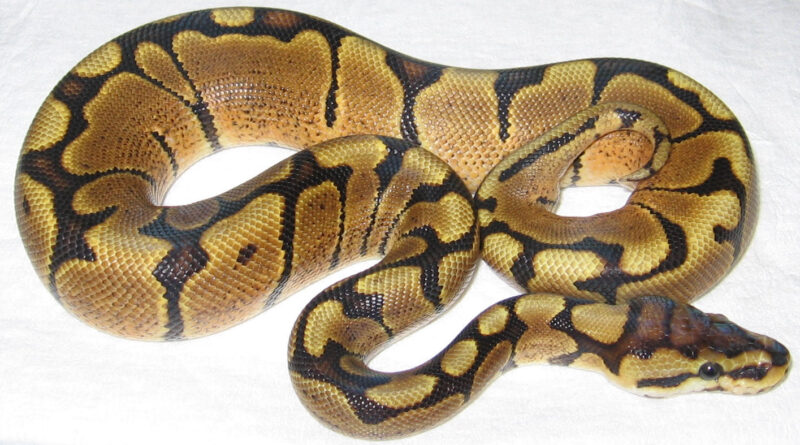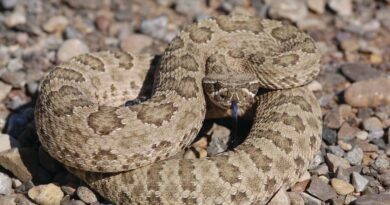Do Ball Pythons Make Good Pets?

Are Ball Pythons the Right Pet for You? A Comprehensive Guide to Owning a Ball Python
Introduction: The Fascinating World of Ball Pythons
Ball pythons, also known as royal pythons, are one of the most popular snake species kept as pets. They are native to sub-Saharan Africa and are known for their docile nature and beautiful patterns. These snakes have become increasingly popular among reptile enthusiasts due to their manageable size, ease of care, and stunning appearance.
One of the main reasons why ball pythons are so popular as pets is their manageable size. Unlike larger snake species, such as Burmese pythons or reticulated pythons, ball pythons typically reach a length of 3 to 5 feet. This makes them easier to handle and house in a home environment. Additionally, their calm and docile nature makes them suitable for both beginner and experienced snake owners.
Another reason why ball pythons are popular among reptile enthusiasts is their stunning appearance. These snakes come in a wide variety of colors and patterns, known as morphs. From classic patterns like the normal or wild type morph to more exotic morphs like the albino or piebald, there is a ball python to suit every aesthetic preference. This variety in appearance has made ball pythons highly sought after by collectors and breeders alike.
Understanding the Needs of Ball Pythons: Habitat, Diet, and Temperature
To provide the best care for your ball python, it is important to understand their specific needs in terms of habitat, diet, and temperature.
The ideal habitat for a ball python should mimic their natural environment as closely as possible. This means providing a secure enclosure with appropriate substrate, hiding spots, and climbing opportunities. A glass terrarium or plastic enclosure with a secure lid is recommended to prevent escapes. The substrate should be a material that retains humidity well, such as coconut husk or cypress mulch. Hiding spots can be provided in the form of caves or commercially available reptile hides. It is also important to provide branches or other climbing structures for your ball python to explore.
In terms of diet, ball pythons are carnivorous and primarily eat small mammals in the wild. As pets, they can be fed a diet of appropriately sized frozen-thawed rodents, such as mice or rats. The size of the prey should be proportional to the size of the snake, with larger snakes requiring larger prey items. It is important to feed your ball python pre-killed prey to prevent injury to both the snake and the prey animal.
Temperature regulation is crucial for the health and well-being of ball pythons. These snakes are ectothermic, meaning they rely on external heat sources to regulate their body temperature. A temperature gradient should be provided in the enclosure, with a warm side and a cool side. The warm side should have a temperature of around 88-92°F (31-33°C), while the cool side should be around 78-82°F (25-28°C). This can be achieved by using heat lamps or heat mats, along with a thermostat to regulate the temperature.
Pros and Cons of Owning a Ball Python: Is It the Right Pet for You?
Owning a ball python comes with its own set of advantages and potential drawbacks. Before deciding to bring one into your home, it is important to consider these factors.
One of the main advantages of owning a ball python is their docile nature. These snakes are known for being calm and easy to handle, making them suitable for both beginner and experienced snake owners. They are generally not aggressive and rarely bite unless provoked or stressed. This makes them a great choice for those who want a pet snake that can be handled and interacted with.
Another advantage of owning a ball python is their relatively low maintenance requirements. Compared to other reptiles, such as lizards or turtles, ball pythons have simpler care needs. They do not require UVB lighting, as they are primarily nocturnal, and they have a slower metabolism, which means they do not need to be fed as frequently. This makes them a good choice for those who want a pet reptile but may not have the time or resources to provide more complex care.
However, there are also potential drawbacks to owning a ball python. One of the main considerations is their lifespan. Ball pythons have an average lifespan of 20 to 30 years, with some individuals living even longer. This is a long-term commitment and potential owners should be prepared for the responsibility of caring for a snake for several decades.
Another potential drawback is the size of the enclosure required for a ball python. While they are smaller than some other snake species, they still require a spacious enclosure to thrive. This can take up a significant amount of space in a home and may not be suitable for those with limited space or living in apartments.
Before getting a ball python, it is important to consider factors such as your lifestyle, available space, and commitment to long-term care. These snakes require regular feeding, cleaning, and maintenance, so it is important to ensure that you can provide the necessary care before bringing one into your home.
Choosing the Right Ball Python: Morphs, Colors, and Personality Traits
When choosing a ball python as a pet, there are several factors to consider, including morphs, colors, and personality traits.
Ball pythons come in a wide variety of morphs and colors, each with its own unique appearance. The most common morph is the normal or wild type morph, which has a brown or black base color with dark brown or black markings. However, there are also many other morphs available, such as albino, piebald, pastel, and spider, which have different patterns and colors. The choice of morph is largely a matter of personal preference, so it is important to choose a ball python that you find visually appealing.
In addition to morphs and colors, it is also important to consider the personality traits of a ball python when choosing one as a pet. While individual snakes can vary in temperament, there are some general traits that are common among ball pythons. They are typically docile and calm, making them easy to handle and interact with. However, some individuals may be more shy or skittish than others. It is important to spend time observing and handling a potential pet snake before making a decision to ensure that their personality is a good fit for you.
When it comes to purchasing a ball python, there are several options available. You can buy a ball python from a reputable breeder, who will often have a wide variety of morphs and colors to choose from. This allows you to select a snake with the specific appearance and traits that you desire. Another option is to adopt a ball python from a rescue or reptile sanctuary. This can be a rewarding experience, as you are providing a home for a snake in need. However, it is important to ensure that the snake is healthy and well-cared for before bringing it into your home.
Handling and Taming Your Ball Python: Tips and Tricks
Handling and taming your ball python is an important part of building a bond with your pet and ensuring their well-being. Here are some tips and tricks for handling and taming your ball python:
1. Start slow: When first handling your ball python, it is important to start slow and be gentle. Allow the snake to get used to your presence by placing your hand near them without touching them. Once they are comfortable with this, you can slowly start to handle them.
2. Support their body: When picking up your ball python, it is important to support their body properly. Use both hands to support their weight and avoid squeezing or gripping them too tightly. This will help them feel secure and reduce the risk of injury.
3. Be patient: Taming a ball python can take time, especially if they are shy or skittish. Be patient and allow them to adjust to their new environment at their own pace. Avoid forcing them to interact with you if they are not ready.
4. Use positive reinforcement: When handling your ball python, use positive reinforcement in the form of treats or rewards. This will help them associate handling with positive experiences and make them more comfortable with being handled.
5. Handle regularly: Regular handling is important for taming your ball python and building a bond with them. Aim to handle your snake for short periods of time, several times a week. This will help them become accustomed to being handled and reduce any potential stress or anxiety.
Common Health Issues in Ball Pythons: Prevention and Treatment
Like all pets, ball pythons are susceptible to certain health issues. It is important to be aware of these issues and take steps to prevent and treat them.
One common health issue in ball pythons is respiratory infections. These can be caused by improper temperature or humidity levels in the enclosure, as well as poor husbandry practices. Symptoms of a respiratory infection include wheezing, open-mouth breathing, and mucus around the mouth or nostrils. If you suspect that your ball python has a respiratory infection, it is important to seek veterinary care immediately. Treatment typically involves antibiotics and supportive care, such as nebulization.
Another common health issue in ball pythons is mites. These tiny parasites can infest the snake’s skin and cause irritation and discomfort. Signs of a mite infestation include excessive scratching, small red dots on the skin, and visible mites on the snake or in the enclosure. If you notice any signs of mites, it is important to take immediate action to prevent the infestation from spreading. This may involve treating the snake with a mite-specific product and thoroughly cleaning and disinfecting the enclosure.
Other health issues that can affect ball pythons include scale rot, mouth rot, and parasites. It is important to regularly inspect your snake for any signs of illness or injury and seek veterinary care if necessary. Additionally, providing a clean and well-maintained enclosure, along with a proper diet and temperature regulation, can help prevent many health issues in ball pythons.
Creating a Safe and Comfortable Home for Your Ball Python: Cage Setup and Maintenance
Creating a safe and comfortable home for your ball python is essential for their well-being. Here are some tips for setting up and maintaining their enclosure:
1. Choose the right size enclosure: The size of the enclosure will depend on the size of your ball python. A general rule of thumb is to provide an enclosure that is at least as long as the snake’s length and wide enough for them to stretch out comfortably. This will give them enough space to move around and explore.
2. Provide appropriate substrate: The substrate in the enclosure should be a material that retains humidity well, such as coconut husk or cypress mulch. Avoid using substrates that can cause impaction, such as sand or gravel. The substrate should be deep enough for your ball python to burrow if they choose to do so.
3. Offer hiding spots: Hiding spots are important for ball pythons, as they provide a sense of security. You can use commercially available reptile hides or create your own using materials like cork bark or PVC pipes. Place hiding spots on both the warm and cool sides of the enclosure.
4. Maintain proper temperature and humidity levels: Temperature regulation is crucial for the health of ball pythons. Use heat lamps or heat mats to provide a temperature gradient in the enclosure, with a warm side and a cool side. The warm side should have a temperature of around 88-92°F (31-33°C), while the cool side should be around 78-82°F (25-28°C). It is also important to maintain proper humidity levels, which should be around 50-60%.
5. Clean and disinfect regularly: Regular cleaning and disinfection of the enclosure is important to prevent the buildup of bacteria and parasites. Remove any feces or soiled substrate promptly and clean the enclosure with a reptile-safe disinfectant. It is also important to regularly clean and disinfect any water bowls or feeding dishes.
Interacting with Your Ball Python: Bonding and Enrichment Activities
Interacting with your ball python is not only important for their physical well-being but also for building a bond with them. Here are some tips for bonding with your ball python and providing enrichment activities:
1. Spend time near the enclosure: Spending time near your ball python’s enclosure can help them become accustomed to your presence and voice. Talk to them in a calm and soothing tone and avoid sudden movements or loud noises that may startle them.
2. Handle your snake regularly: Regular handling is important for bonding with your ball python. Start with short handling sessions and gradually increase the duration as they become more comfortable. Be gentle and patient, and always support their body properly.
3. Offer enrichment activities: Enrichment activities can help keep your ball python mentally stimulated and prevent boredom. This can include providing climbing structures, hiding spots, and puzzle feeders. You can also try introducing new scents or textures into their environment to provide sensory enrichment.
4. Observe their behavior: Take the time to observe your ball python’s behavior and body language. This will help you understand their preferences and needs. For example, if they are hiding more than usual, it may indicate that they are feeling stressed or insecure.
5. Respect their boundaries: It is important to respect your ball python’s boundaries and not force them to interact with you if they are not comfortable. Some snakes may be more shy or skittish than others, and it is important to give them space and time to adjust at their own pace.
Legal Considerations for Owning a Ball Python: Permits and Regulations
Before getting a ball python as a pet, it is important to be aware of the legal requirements and regulations in your area. While ball pythons are legal to own as pets in many places, there may be specific permits or regulations that need to be followed.
In some countries or states, there may be restrictions on owning certain species of snakes, including ball pythons. It is important to research the laws and regulations in your area before acquiring a ball python. This may involve obtaining permits or licenses, or adhering to specific enclosure size or safety requirements.
If you plan to transport your ball python across state or international borders, there may also be additional regulations that need to be followed. This can include obtaining health certificates or permits from the appropriate authorities. It is important to research and comply with these regulations to ensure the safe and legal transport of your snake.
Conclusion: Making an Informed Decision about Owning a Ball Python
Owning a ball python can be a rewarding experience for reptile enthusiasts. However, it is important to make an informed decision before bringing one into your home. Ball pythons require specific care and attention, including a proper enclosure, temperature and humidity control, and a balanced diet. They can live for up to 30 years in captivity, so it is crucial to consider the long-term commitment involved. Additionally, potential owners should be aware of the potential health issues that can arise, such as respiratory infections and mites. It is also important to research local laws and regulations regarding ownership of ball pythons, as they may be restricted in some areas. Overall, owning a ball python can be a rewarding and fascinating experience, but it requires dedication, knowledge, and a commitment to providing the best care possible for these unique creatures.




